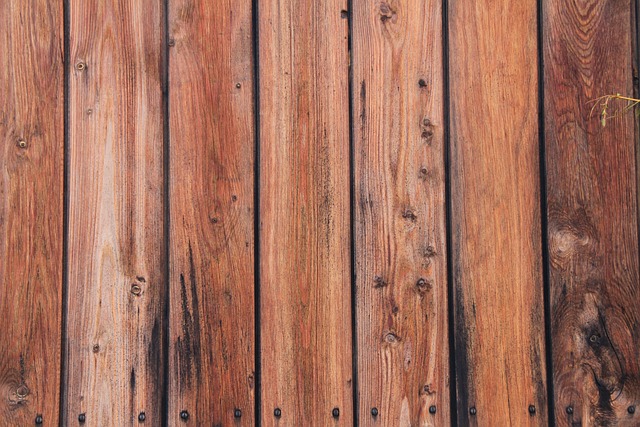In New Bedford, MA, the push for sustainable living has extended to landscaping, with eco-friendly fencing materials gaining traction. This trend not only reduces environmental impact but also offers numerous benefits, including improved aesthetics, enhanced privacy, and better animal control. This article explores the current eco-fencing trends in New Bedford, delves into the advantages of sustainable materials, highlights popular low-impact options, provides installation tips for minimizing environmental harm, and discusses the longevity and maintenance of these innovative fencing solutions.
- Eco-Friendly Fencing Trends in New Bedford
- Benefits of Sustainable Fencing Materials
- Popular Options for Low-Impact Fences
- Installation Tips for Environmental Conservation
- Longevity and Maintenance of Eco-Fencing Solutions
Eco-Friendly Fencing Trends in New Bedford
In recent years, New Bedford has seen a growing trend towards eco-friendly fencing materials, driven by both environmental consciousness and aesthetic preferences. Residents and local businesses are increasingly opting for sustainable alternatives to traditional wooden or vinyl fences. Natural, renewable resources like bamboo, recycled plastic, and organic composite materials have gained popularity due to their low carbon footprint and durability. These options not only reduce the environmental impact but also blend seamlessly with the natural landscapes of New Bedford, enhancing the overall curb appeal.
Local suppliers and contractors are responding to this demand by offering a diverse range of eco-friendly fencing solutions tailored to various styles and budgets. From sleek, modern designs to traditional wooden looks replicated with sustainable materials, there is something for everyone. Additionally, these products often come with extended warranties, ensuring their longevity while providing peace of mind for homeowners.
Benefits of Sustainable Fencing Materials
In an era where environmental consciousness is at an all-time high, adopting eco-friendly fencing materials offers a multitude of benefits for both residents and the local ecosystem in New Bedford, MA. These sustainable alternatives not only contribute to a greener environment but also enhance the aesthetic appeal of properties while ensuring long-term durability. By choosing materials like recycled plastic, bamboo, or organic wood treated with non-toxic preservatives, homeowners can reduce their carbon footprint and promote biodiversity.
Sustainable fencing provides an opportunity for a positive environmental impact by minimizing waste, preserving natural resources, and reducing pollution associated with traditional fencing production. Moreover, these eco-conscious options often possess superior strength and resilience, making them capable of withstanding harsh weather conditions while requiring less maintenance over time, ultimately saving homeowners money and effort.
Popular Options for Low-Impact Fences
In New Bedford, MA, where environmental consciousness is on the rise, choosing eco-friendly fencing materials offers both aesthetic and practical benefits. Among the popular options for low-impact fences are those made from recycled plastic and metal. Recycled plastic fences, often in the form of high-density polyethylene (HDPE), are durable, rot-resistant, and require minimal maintenance. They’re an excellent choice for homeowners looking to reduce their carbon footprint without compromising on fence longevity.
Metal fencing, particularly those crafted from recycled steel or aluminum, is another sustainable option. These fences are not only aesthetically appealing but also highly versatile and adaptable to various terrain conditions. Additionally, they can be designed with intricate patterns, providing a touch of elegance while still being kind to the environment. Both types offer privacy, security, and noise reduction without contributing to the environmental impact associated with traditional fencing materials.
Installation Tips for Environmental Conservation
When installing eco-friendly fencing materials, it’s crucial to prioritize environmental conservation practices. Begin by clearing the site, removing any existing debris or vegetation. This step ensures a clean canvas for your new fence, minimizing soil disturbance. Choose a suitable location for your fence, considering its proximity to water sources and vulnerable ecosystems. Proper planning can prevent potential harm to local flora and fauna.
During installation, make use of recycled or biodegradable posts and panels. These materials are not only sustainable but also require less energy to produce. Use eco-friendly fasteners like stainless steel screws or biodegradable binders. Ensure proper spacing between posts to maintain stability while reducing material waste. Regularly inspect the site to check for any signs of damage or invasives species, quickly addressing them to preserve the ecological balance.
Longevity and Maintenance of Eco-Fencing Solutions
Eco-friendly fencing materials, such as recycled plastic, bamboo, or organic composites, offer exceptional longevity compared to traditional wood or metal fences. Their durable nature means fewer replacements and reduced maintenance over time. For instance, recycled plastic fences can withstand harsh weather conditions for decades with minimal care.
Regular cleaning and occasional repairs are usually sufficient to maintain these eco-fencing solutions. Unlike wooden fences that may require frequent painting, sealing, and structural repairs, their low-maintenance properties save homeowners time and money in the long run. This sustainability not only benefits the environment but also provides New Bedford residents with beautiful, durable fencing options for their outdoor spaces.
